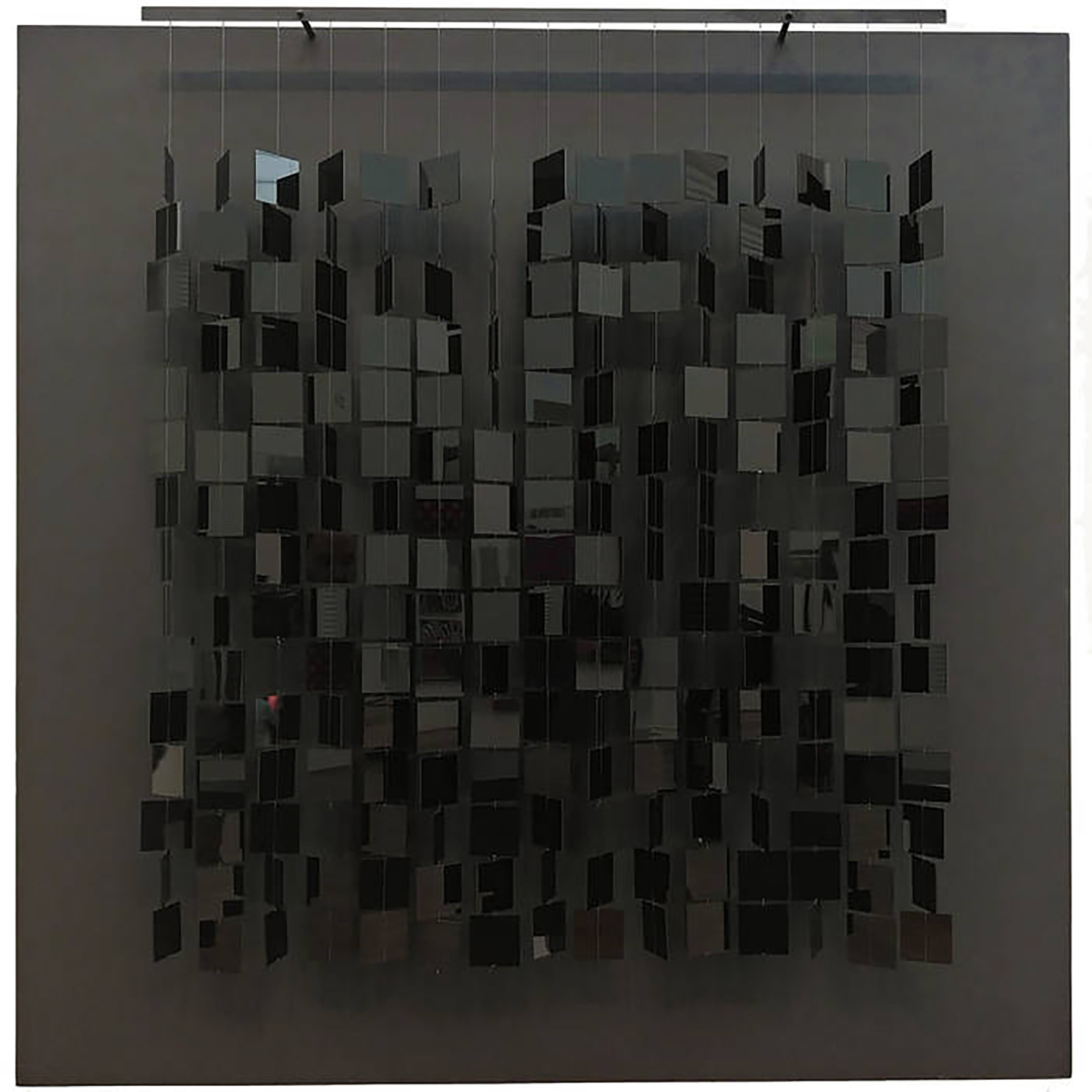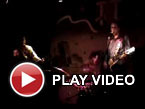Keith Fullerton Whitman, "Late Playthroughs"
 In the early 2000s, Keith Fullerton Whitman parted ways with his Hrvatski moniker and started recording more ambient-minded work under his own name. His first major release in that vein was 2002's Playthroughs (Kranky), an album that is fairly universally acknowledged as a classic of the genre. While I have no argument at all with Playthroughs' status as A Crucial Ambient Album, it is a bit more than that as well, as Whitman devised quite a fascinating and radical compositional approach for the album. Trying to comprehend the actual specifics of the process makes my synapses fizzle and smoke, but the gist is that he fed his guitar into a system of effects and software that produced a completely transformed beast that expanded, evolved, and reshaped with a mind of its own. Being a restlessly creative sort, Whitman soon moved on to other experiments, but he has been periodically revisiting that early system over the last decade with the benefit of newer software. The aptly named Late Playthroughs documents a divergent pair of live resurrections of that set-up dating from last year. Given the uncut, live nature of these pieces, this album is not quite as focused and sharply realized as the original, but it often does a beautiful job of both recapturing that magic and stretching the original aesthetic into stranger, darker terrain.
In the early 2000s, Keith Fullerton Whitman parted ways with his Hrvatski moniker and started recording more ambient-minded work under his own name. His first major release in that vein was 2002's Playthroughs (Kranky), an album that is fairly universally acknowledged as a classic of the genre. While I have no argument at all with Playthroughs' status as A Crucial Ambient Album, it is a bit more than that as well, as Whitman devised quite a fascinating and radical compositional approach for the album. Trying to comprehend the actual specifics of the process makes my synapses fizzle and smoke, but the gist is that he fed his guitar into a system of effects and software that produced a completely transformed beast that expanded, evolved, and reshaped with a mind of its own. Being a restlessly creative sort, Whitman soon moved on to other experiments, but he has been periodically revisiting that early system over the last decade with the benefit of newer software. The aptly named Late Playthroughs documents a divergent pair of live resurrections of that set-up dating from last year. Given the uncut, live nature of these pieces, this album is not quite as focused and sharply realized as the original, but it often does a beautiful job of both recapturing that magic and stretching the original aesthetic into stranger, darker terrain.
Live sound-processing technology has undeniably evolved quite a lot in the nearly two decades since Whitman recorded Playthroughs, but the differences between that album and Late Playthroughs seem far more informed by Whitman's own (similarly dramatic) transformations over that period.For example, I definitely would not describe Whitman as an ambient artist these days, nor have I ever thought of him as a guitarist.It would be far more accurate to describe him as something of an obsessive electroacoustic researcher, forever perched over comically dense tangles of wires, devising elaborate and convoluted new compositional systems, or absorbing arcane and forgotten works from earlier generations of iconoclastic experimenters.That said, he is still quite adept at creating warmly lovely ambient drone when he wants to, and there is some of that to be found here, albeit always in a very precarious state.It is clear that Whitman's true passion lies primarily in creating and harnessing chaos and unpredictability.
For the first of these two performances, recorded at a French art museum, he keeps those latter impulses largely in check, as the early part of "Nantes Playthroughs" is a gorgeously undulating and twinkling dreamscape of lush drones and subtly crackling, gurgling electronics.Gradually, however, some more prominent tones with sharper edges begin to swell out of the bliss-haze, smearing together into passing shadows of dissonance.And by the time the second movement starts (around the 18-minute mark), almost all traces of that former drone nirvana have been obliterated by deep, buzzing bass throbs and a dense, engulfing roar of frequency-saturated chords.Whitman himself describes the piece as the more "placid, calm, measured" of the two performances, but the midsection of the Nantes performance evokes the sensation of being sucked into a crushing black hole: it is an incredibly dense and howling maelstrom mingled with glimpses of transcendent radiance.That storm eventually passes though, and the third and final act is an understated reverie of gently burbling ambience mingled with non-musical sounds that resemble distant industrial machinery.
The second performance is from an "outdoor floodplain in rural Western Japan flanked by mountains in all directions," and Whitman describes it as "wild, risk-enabled, chaotic."At first, however, the Naeba performance is not all that radically different from the Nantes one.The key difference is that the ambience is more woozily hallucinatory and sci-fi-damaged this time around, evoking the quietly humming, buzzing, and bleeping computers of a deserted space station control room.The mood slowly darkens as the piece progresses, though, as a subterranean rumbling creeps in and the twinkling electronic sounds blur together into unsettling harmonies.Unexpectedly, that trajectory fades away in favor of a lovely passage of shivering and swaying processed guitar tones floating above a sputtering and bubbling morass of noise. From there, the piece becomes a constantly shifting fantasia that languorously drifts from kosmische-tinged meditations to rumbling, abstract soundscapes to lazily churning masses of dense guitar tones.The final minutes eventually do get somewhat wild and chaotic (as threatened), but I would actually describe the Naeba performance as the less intense of the two.While there are a couple of sublime "set pieces," the primary appeal of the piece lies in how seamlessly Whitman is able to move from one seemingly disparate thread to another: one moment I am in an immense and echoing cavernous space, then I am being blasted by a howling gale of noise, and then I am sitting quietly in a garden being serenaded by gentle windchimes, yet it all feels weirdly natural, appropriate, and unforced.
Amusingly, Late Playthroughs is the rare album where I find myself exasperated that I cannot turn off my more critical impulses at will to just appreciate the pure pleasure of hearing a master at work.I could not escape the nagging thought that are several extended passages here that could easily be the starting point for yet another classic and beloved album on par with Playthroughs.Instead, such stretches are merely wonderful and ephemeral moments in a larger real-time duel between man and technology.That issue is my own though, as I always want every prolific artist to rein themselves in and focus exclusively on releasing a major, fully formed statement every couple of years rather than an endless succession of minor ones.The "hey, why not spend some time crafting a great album?" mindset is very much a fan-focused one though, and Whitman is one of a pantheon of great artists (Kevin Drumm, Jason Lescalleet, Jim O’Rourke) who are far more interested in constantly moving forward with their art rather than stopping to provide polished and concise summaries of each individual stage.Each certainly has a handful of (often unrepresentative) entry points into their endlessly expanding oeuvre of sketches and experiments, yet the full depth and scope of their artistry lies in the unfolding evolution itself.I am embarrassed that it took a remake of a classic album (of sorts) to lure me into Whitman’s stream of under-the-radar flashes of brilliance, as Late Playthroughs makes it clear that his fitful succession of digital releases is well-worth paying attention to.Late Playthroughs is not quite distilled enough to be a truly great album, but the pair of performances that it documents is quite an awe-inspiring illustration of the vibrant, intricate, and immense soundworlds that Whitman alone can conjure into being.



